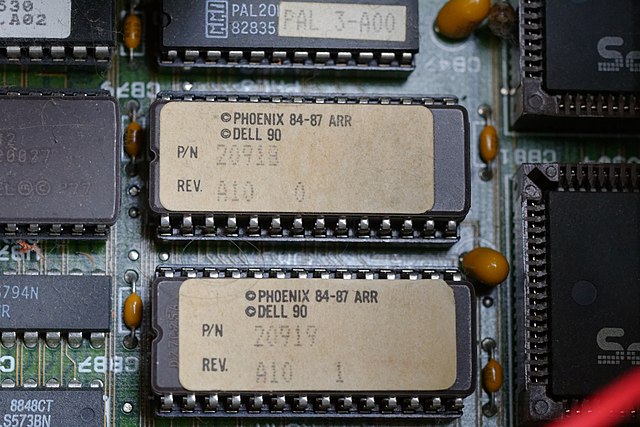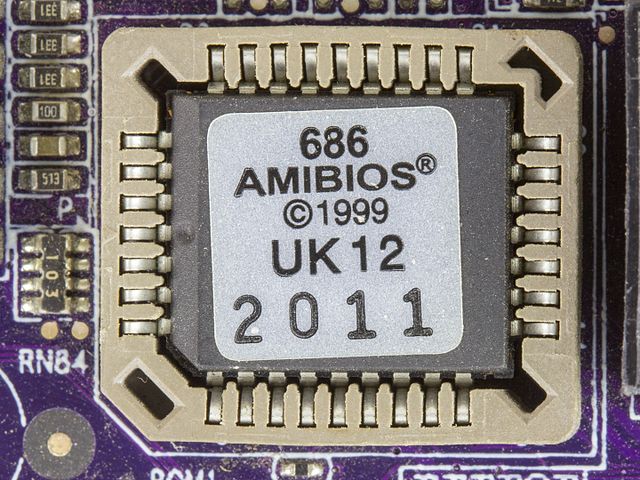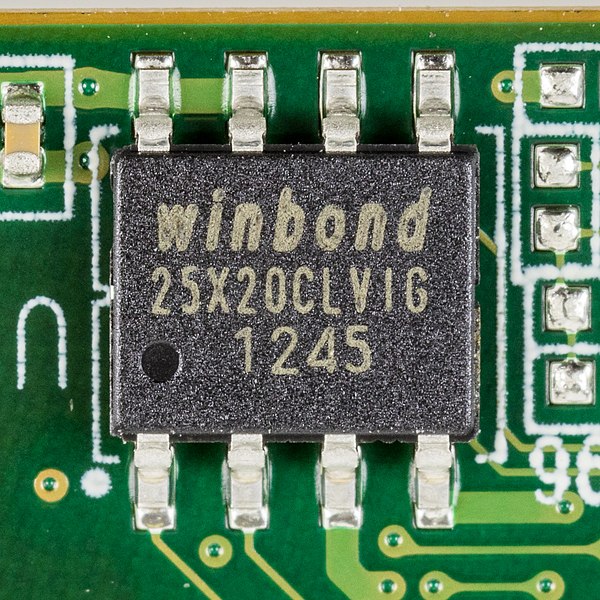In computing, BIOS is firmware used to provide runtime services for operating systems and programs and to perform hardware initialization during the booting process. The BIOS firmware comes pre-installed on an IBM PC or IBM PC compatible's system board and exists in some UEFI-based systems to maintain compatibility with operating systems that do not support UEFI native operation. The name originates from the Basic Input/Output System used in the CP/M operating system in 1975. The BIOS originally proprietary to the IBM PC has been reverse engineered by some companies looking to create compatible systems. The interface of that original system serves as a de facto standard.
A pair of AMD BIOS chips for a Dell 310 computer from the 1980s. The bottom one shows the distinct window of an EPROM chip.
BIOS chips in a Dell 310 that were updated by replacing the chips
BIOS replacement kit for a Dell 310 from the late 1980s. Included are two chips, a plastic holder for the chips, and a IC extractor.
American Megatrends BIOS 686. This BIOS chip is housed in a PLCC package in a socket.
In computing, firmware is software that provides low-level control of computing device hardware.
For a relatively simple device, firmware may perform all control, monitoring and data manipulation functionality.
For a more complex device, firmware may provide relatively low-level control as well as hardware abstraction services to higher-level software such as an operating system.
Firmware is commonly stored in an EEPROM, which makes use of an I/O protocol such as SPI.
ROM BIOS firmware on a Baby AT motherboard
Updating the firmware of a Fuji Instax camera







